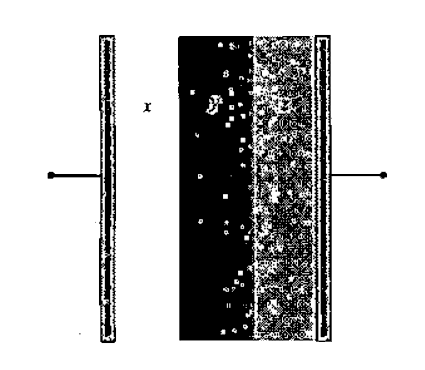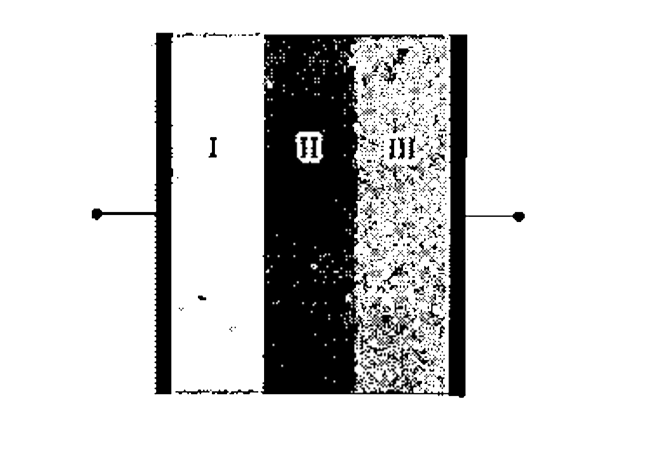The figure shows a capacitor having three dielectric layers parallel to its plates. Layer is vacuum, is conductor and is a dielectric. Which of the following change(s) will result in increase in capacitance ?

Replace by conductor
Replace by dielectric
Replace by conductor
Replace by dielectric
The correct Answer is:A, C, D
Step by step video, text & image solution for The figure shows a capacitor having three dielectric layers parallel to its plates. Layer x is vacuum, y is conductor and z is a dielectric. Which of the following change(s) will result in increase in capacitance ? by Physics experts to help you in doubts & scoring excellent marks in Class 12 exams.
Topper's Solved these Questions
- BOOK - PHYSICS GALAXY - ASHISH ARORACHAPTER - CAPACITANCEEXERCISE - UNSOLVED NUMERICAL PROBLEMS40videos
CAPACITANCE
- BOOK - PHYSICS GALAXY - ASHISH ARORACHAPTER - CAPACITANCEEXERCISE - NUMERICAL MCQS56videos
CAPACITANCE
- BOOK - PHYSICS GALAXY - ASHISH ARORACHAPTER - ATOMIC PHYSICSEXERCISE - Unsolved Numerical Problems39videos
ATOMIC PHYSICS
- BOOK - PHYSICS GALAXY - ASHISH ARORACHAPTER - CURRENT ELECTRICITYEXERCISE - All Questions389videos
CURRENT ELECTRICITY
Similar Questions
Figure shows a capacitor having three layers of equal thickness and same area as that of its plates. Layer-I is free space, Layer-II is a conductor and Layer-Ill is a dielectric of dielectric constant k. Calculate the ratio of energy stored in region III to total energy stored in capacitor when a potential difference is applied across the plates of capacitor.
 View Solution
View SolutionA parallel plate capacitor of capacitance has spacing between two plates having area The region between the plates is filled with dielectric layers, parallel to its plates, each with thickness δ=dN. The dielectric constant of the mth layer is Km=K(1+mN). For a very large N(>103), the capacitance Cisα(K∈0Adln2). Find the value of α.[∈0 is the permittivity of free space]
View Solution
Knowledge Check
- Question 1 - Select One or More
The figure shows a capacitor having three dielectric layers parallel to its plates. Layer x is vacuum, y is conductor and z is a dielectric. Which of the following change(s) will result in increase in capacitance ?
 Areplace x by conductorBreplace y by dielectricCreplace z by conductorDreplace x by dielectric
Areplace x by conductorBreplace y by dielectricCreplace z by conductorDreplace x by dielectric - Question 2 - Select One or More
In the given figure a capacitor having three layers between the plates. Layer x in vaccum, y is conductor, and z is a diselectric. Which of the following charge will result in increase in capacitance?
 AReplace x by conductorBReplace y by dielectricCReplace z by conductorDReplace x by dielectric
AReplace x by conductorBReplace y by dielectricCReplace z by conductorDReplace x by dielectric - Question 3 - Select One
A parallel plate air capacitor has a capacitance C. When it is half filled with a dielectric of dielectric constant 5, then the percentage increase in the capacitance will be
 A400%B66.6%C33.3%D200%
A400%B66.6%C33.3%D200%
A parallel plate air capacitor has a capacitance C. The capacitor is half-filled with a dielectric of dielectric constant 5. The percentage increase in the capacitance must have been -- %.
View SolutionA parallel plate capacitor of capacitance C has spacing d between two plates having area A. The region between the plates is filled with N dielectric layers, parallel to its plates, each with thickness
δ=dN .The dielectric constant of the mth layer is Km=K(1+mN). For a very large N(<103), the capacitance C is α(k∈0Ad1n2) .The value of αwillbe.<br> [in _0 is the permittivity of free space ]View SolutionA parallel plate capacitor is connected to a battery and inserted a dielectric plate between the place of plates then which quantity increase
View SolutionA parallel plate air capacitor has a capacitance C. When it is half filled with a dielectric of dielectric constant 5, the percentage increase in the capacitance will be
View Solution(a) Justify the following statements
(i) Tungsten is used exclusively for filament by electric lamps
(ii) We do not use series arrangement for domestic circuits.
(b) A wire of resistance 8Ω is bent in the form of a closed circle. What is the effective resistance between two points A and B at the ends of any diameter of the circle ?View Solution

